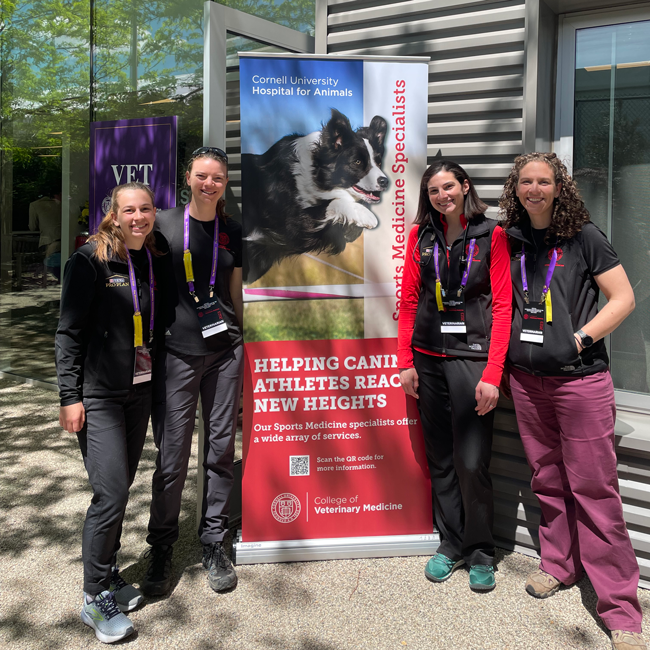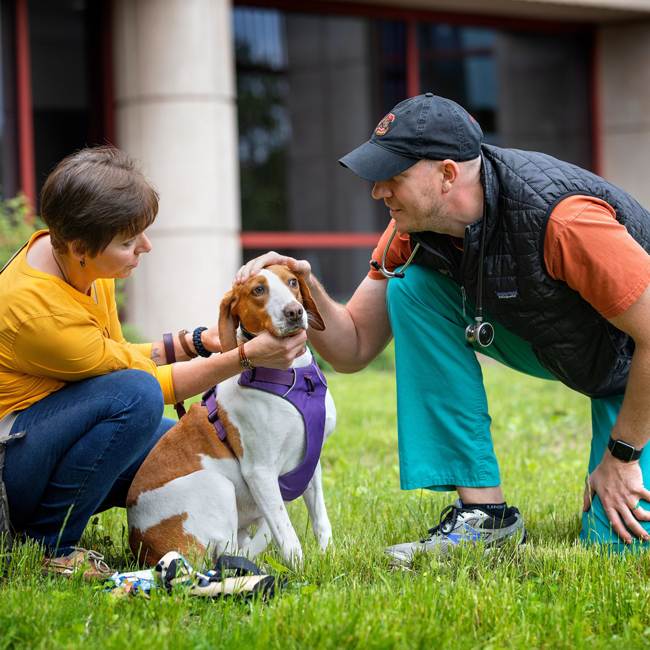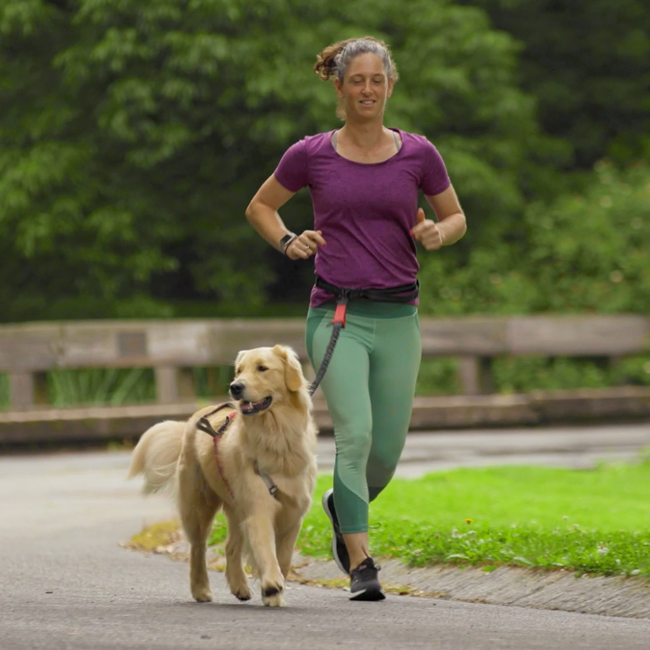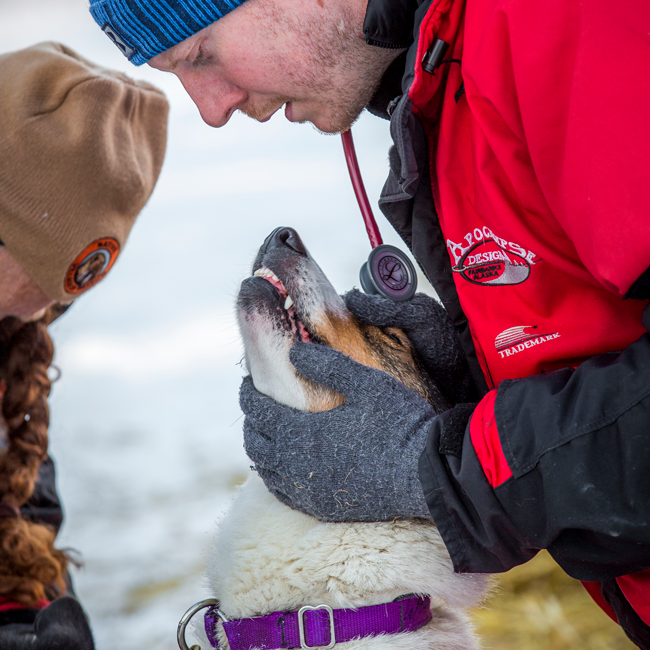Sports Medicine and Rehabilitation
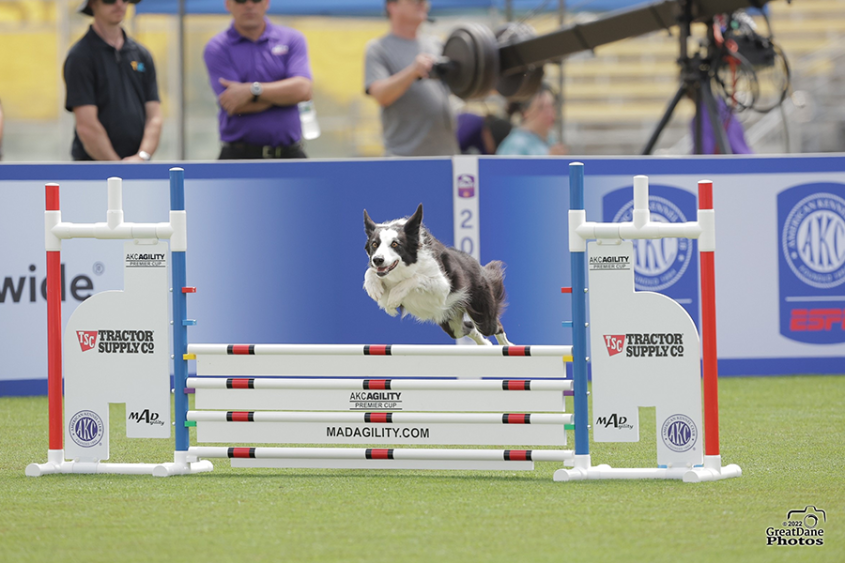
The Sports Medicine and Rehabilitation Service works to improve your pet's mobility and comfort.
We specialize in the non-surgical, non-invasive diagnosis of lameness, pain management, rehabilitation, conditioning and injury prevention. We treat a wide spectrum of mobility issues in dogs and cats, from performance lameness to geriatric immobility.
Watch our video on Sports Medicine & Rehabilitation at Cornell Vet (video and transcript).
Services provided
Musculoskeletal ultrasound and other diagnostic imaging
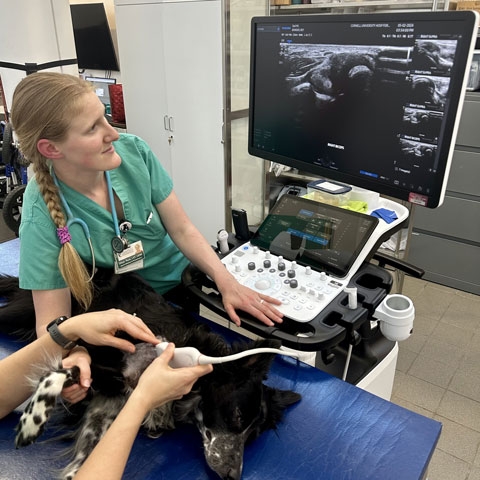
At the core of lameness diagnosis are excellent examinations and targeted diagnostic imaging. Such imaging modalities may consist of one or a combination of x-rays, musculoskeletal ultrasound, CT scan and MRI. These imaging techniques allow us to assess bone, muscle, tendons, joints, cartilage, ligaments, nerves and more in both a static (not moving) and dynamic (motion or positional) studies. Many times, the appropriate combination of imaging modalities is required to obtain a diagnosis, as many musculoskeletal diseases compromise multiple tissues within an area.
Subjective and objective gait and mobility analysis
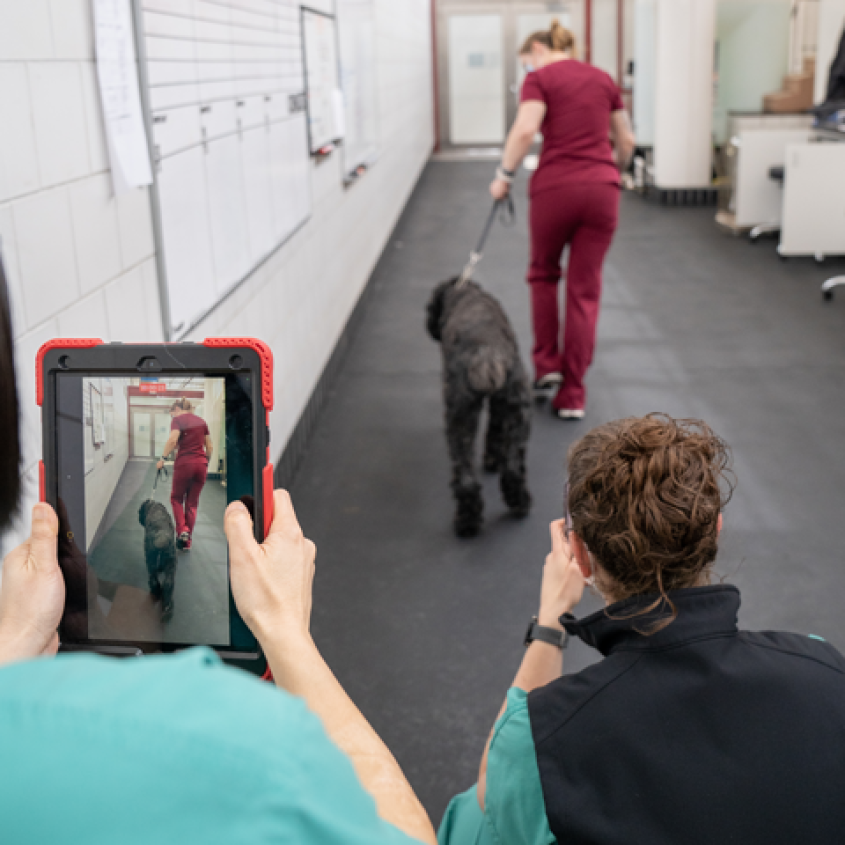
Gait analysis can be both subjective (an expert opinion based on observation) or objective (unbiased methods of assessing movement, forces or other reflections of normal and abnormal movement). Here at Cornell, we have the Krotscheck Gait Lab, which uses state-of-the-art kinetic gait analysis systems, including a pressure-sensitive walkway and dual piezoelectric force-plate.
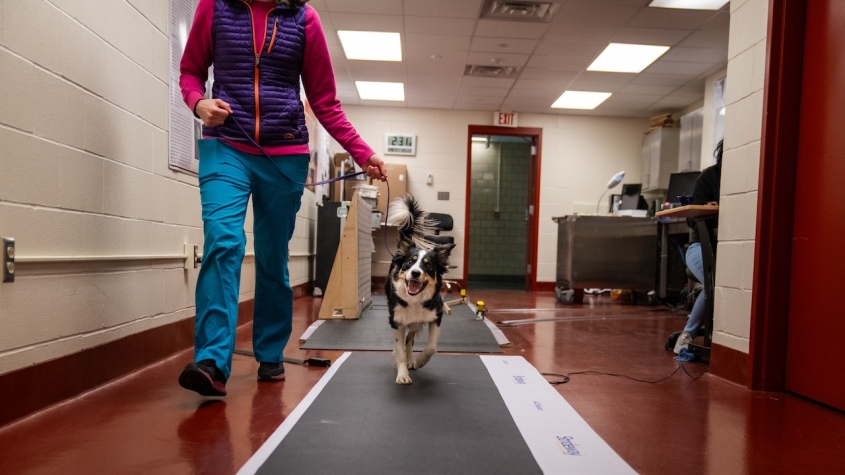
Objective gait analysis may be used for research or clinically to identify subtle lameness or monitor response to therapy. Some methods to monitor movement at home include the use of accelerometry or GPS tracking; there are commercial activity monitors for animals with similar functions to that of those in people (Fitbit, Apple watch, Garmin products, etc).

Regenerative medicine, stem cells, platelet-rich plasma, etc.
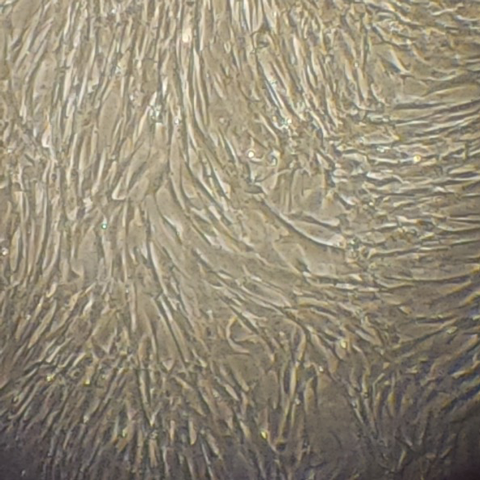
We have a dedicated veterinary regenerative medicine laboratory. Regenerative medicine leverages therapies with the potential to replace, repair or regenerate damaged cells, tissues or organs. Such biological therapies, when applied to various musculoskeletal disease, are termed orthobiologics, and may consist of stem cell therapy, platelet rich plasma, autologous serum and many more. We are currently working alongside the FDA to provide opportunities for application of stem cells to damaged musculoskeletal tissues in different species including dogs. Our service and laboratory are well established in veterinary stem cell and platelet rich plasma research.
Stem Cell Therapy (MSCs)
Mesenchymal stem (stromal) cell therapy (MSC) may be used as an orthobiologic for certain musculoskeletal diseases with supporting evidence in veterinary medicine. Stem cell collection on dogs may be done in several ways. At the Cornell University Hospital for Animals, we chose to harvest stem cells from bone marrow for culture and expansion, as well as an option for longer term storage and repeat dosing. The harvesting of cells may be conducted under patient sedation. Cultured cells are typically ready for delivery in about four weeks, at which time a second sedated procedure is conducted. The cells may be stored frozen for repeat or future procedures without having to collect again.
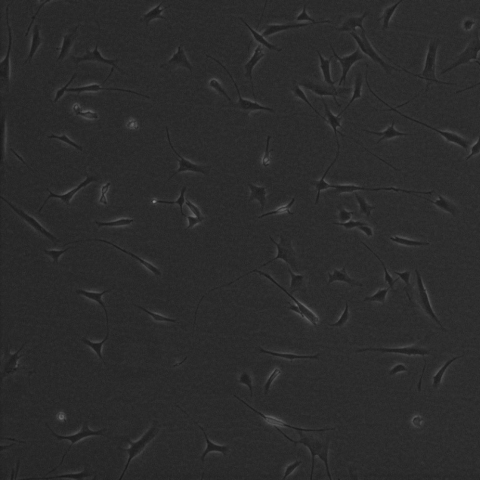
We do not expect mesenchymal stem/stromal cells (MSCs) to replace or regrow damaged tissue. Scientific research has shown that these products are more likely to have a “trophic effect,” in that they provide a beneficial effect for inflammation, pain and healing. In dogs, studies support their use for osteoarthritis with a clinical benefit lasting three-to-six months. There is some evidence of added benefit when delivered along with PRP. Although more research is warranted for any orthobiologic product, we are optimistic given the current scientific support.
Platelet-rich plasma (PRP)
Platelet-rich plasma (PRP) is a product created from your own dog’s blood that is rich in cells called platelets, which contain growth factors and inflammatory mediators. PRP can be processed on site and delivered all at one time with mild sedation. PRP essentially reduces inflammation and associated discomfort. When used for osteoarthritis in dogs, PRP typically shows a positive effect on comfort and mobility lasting about three months. In human literature, PRP is more effective in early arthritis, but in our experience and research, it can still help with more advanced arthritis and may be repeated as indicated.
Learn more about our FDA-approved clinical trial on the trial's webpage here. Please reach out to section chief Dr. Chris Frye to see if your animal is a candidate.
Therapeutic modalities, including acupuncture, shockwave and electrotherapy
Our service employs a variety of therapeutic modalities to help your pet with its mobility and pain issues. Such modalities are physical agents aimed at alleviating pain or promoting tissue healing.
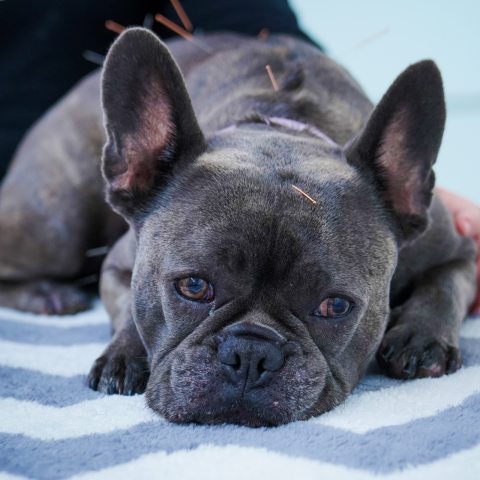
Electro-acupuncture
Acupuncture is one option among different treatments for pain in clinical veterinary practice. This procedure is the insertion of sterile needles into traditional Chinese medicine acupuncture points that produce a physiological response that can help mitigate pain and improve physiological responses to current treatments. The advantages of acupuncture are that it is practical, safe and with fewer side effects when compared with the conventional pharmaceutical management of pain. The application of select electrical currents during acupuncture has the potential to assist in further pain relief, neuromuscular re-education and reduction of edema/swelling. We do recommend electro-acupuncture over dry needling. This may be performed in conjunction with underwater treadmill therapy. Initially, weekly visits are recommended and based on response; treatments will be stagger to every other week/monthly, etc.
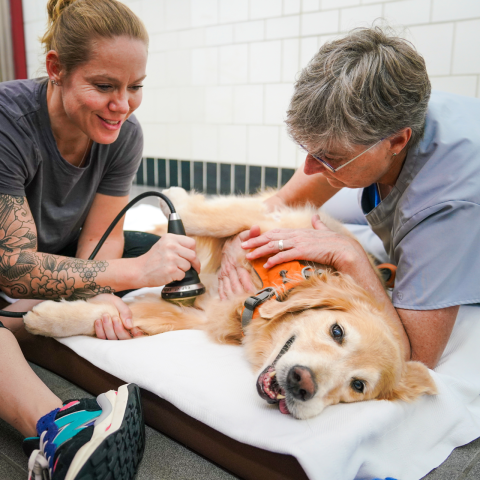
Shockwave therapy
This treatment is nonsurgical, noninvasive and we have a cutting-edge piezoelectric unit that can be used comfortably on patients without sedation. Shockwaves are high-energy sound waves that are directed to a target treatment area on your animal's body and is supported in studies to benefit dogs with osteoarthritis, chronic tendon disease and more.
Class IV laser therapy
Laser therapy stimulates cell function, blood flow and signaling with the goal of promoting tissue healing, reducing pain and mediating inflammation.
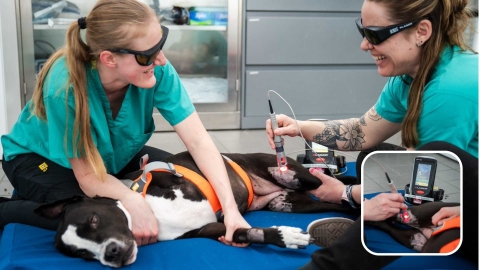
Therapeutic ultrasound for deep tissue heating
Therapeutic ultrasound uses a sound frequency that penetrates tissue to induce a biological or thermal effect. It can heat deeper tissues such as tendons and muscle fibers to improve extensibility and range of motion. It may also be used to heal tissues, mediate inflammation and decrease pain by non-thermal means.
Electrical nerve stimulation (TENS or NMES)
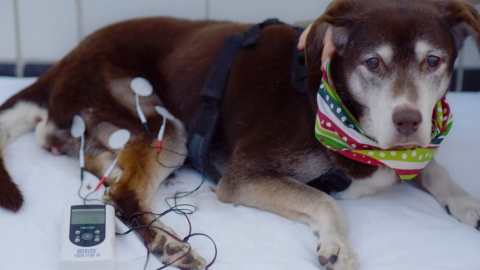
Transcutaneous electrical nerve stimulations (TENS) is used to stimulate the sensory nerves and believed to reduce pain perception through pain inhibition or increase the body’s own opioid release or promote tissue healing. Neuromuscular electrical stimulation (NMES) apply different settings to stimulate engagement of muscle contraction in select intervals over time, with the goals of subsequent muscle strengthening and neuromuscular conditioning (NMES).
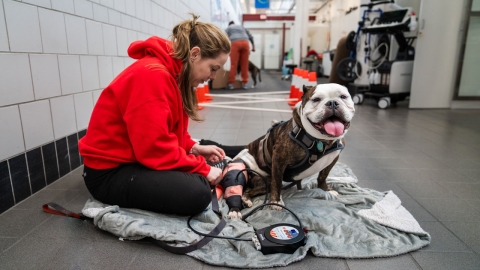
Cryocompression
Cryocompression is a more modern application of traditional icing therapy. A cold sleeve is applied to the affected area and pressured. The compression helps alleviate swelling/edema and applies the cold compress better to affected tissues. Cold compression has been shown to alleviate post-operative discomfort and swelling, and improves the range of motion in dogs recovering from orthopededic surgery.
Rehabilitation, prosthetics, bracing, assistive devices
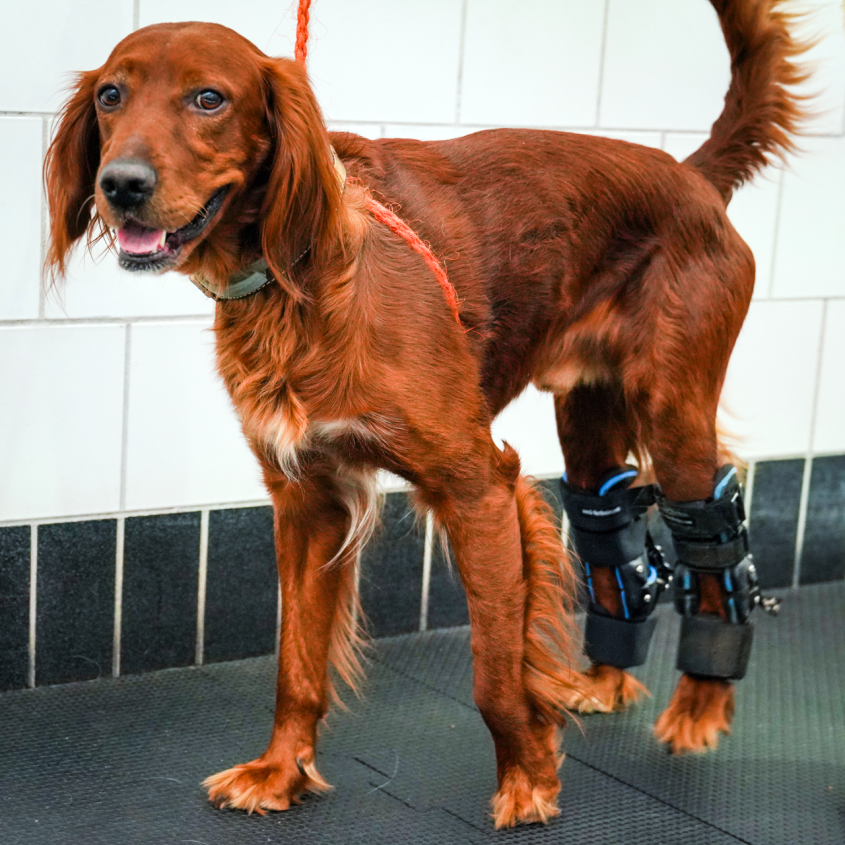
Physical therapy and injury recovery
Rehabilitation is a key part of our service. Whether your pet recently underwent surgery or is experiencing a non-surgical condition, we can help raise their quality of life and bring them back to their normal, everyday activities faster. We offer hydrotherapy through our underwater treadmill; orthotics (braces), prosthetics and carting for animals; and baseline evaluations, conditioning and nutrition plans for the canine athlete.
Underwater treadmill therapy
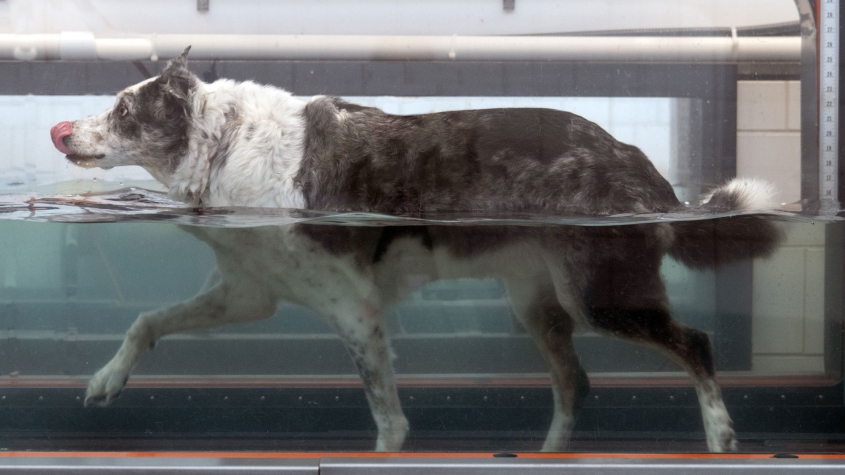
Underwater treadmill therapy will help improve general strength, range of motion and gait patterning, while decreasing stress on joints. This treatment helps strengthen dogs while the natural buoyant properties of water help alleviate excess gravitational stress on weak limbs or painful joints. The underwater treadmill provides a safe and comfortable environment to improve mobility, increase cardiovascular function, recondition to sport/activity, and provides safe mental and physical stimulation for dogs recovering form injury.
Land treadmill therapy
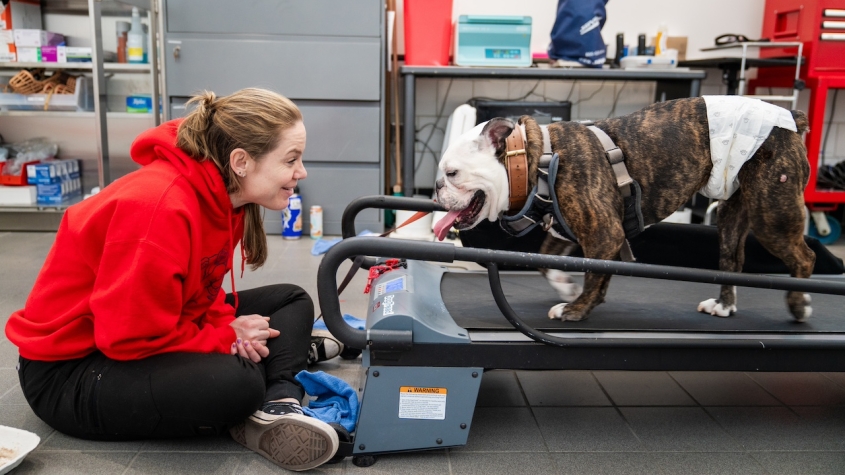
We have two land treadmills made specifically for dogs that we use for patients for gait patterning, muscle strengthening, and conditioning.
Conditioning plans
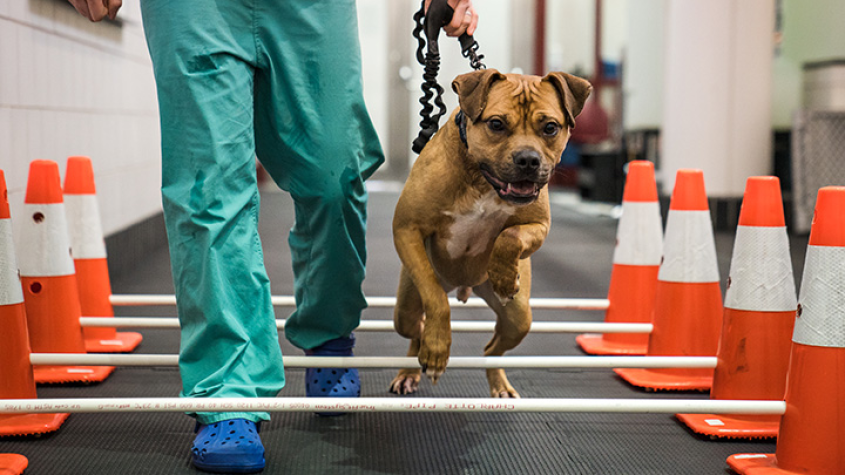
Our service can create catered home exercise and conditioning plans to optimize a patient’s approach to sport/work, or make that transition from injury recovery to return to sport. We have experience with a variety of sporting dogs (endurance athletes, agility, dock diving, barn hunt, obedience, sprinting and more) and working dogs (police, military, search and rescue, and service). We provide comprehensive assessment of your pet that may include baseline diagnostics and gait analysis as well as nutritional and supplement history. We account for the patient’s goals, prior training, nutrition, cross training and periodization in our plans. Whatever your pet's condition, we are a non-invasive option to help your pet with a variety of pain and mobility issues.
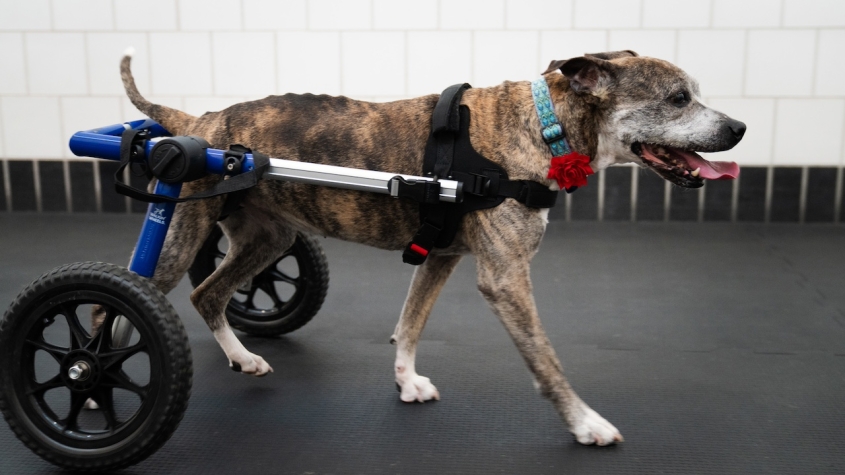
Interventional pain management
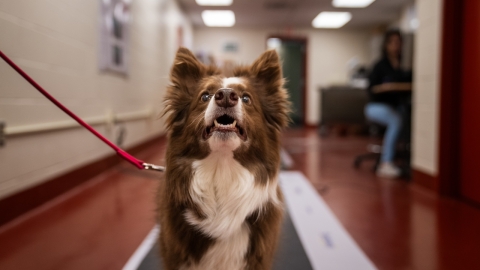
If your dog or cat is struggling with a painful condition, interventional pain management works to reduce pain in a targeted are of the body while avoiding the systemic effects of many traditional pain management options, such as oral medication. Examples include musculoskeletal injection therapies (joint, tendon, muscle), epidurals, perineural injection, nerve ablation and more. All of these procedures are designed to be image-guided and minimally invasive, with the ultimate goal of increasing your pet's quality of life, avoiding or reducing unwanted adverse effects of systemic pain relievers, and getting them back to their everyday activities. Common conditions include osteoarthritis, tendinopathies, pinched nerves and other chronic localizable pain syndromes.
State-of-the-art facilities
Our state-of-the-art rehabilitation center features a large, open working space with natural sunlight and excellent flooring for impaired patients to walk. We have cutting-edge specialized equipment, including an underwater treadmill with resistance jets and inclination capabilities, two land treadmills, piezoelectric extracorporeal shockwave (no sedation required), therapeutic laser, electrical stimulation capabilities with TENS and NMES, and a full set of exercise equipment (physiorolls, balance discs, weights, therabands, cavaletti, etc). We also operate two dedicated labs: The Krotscheck Kinetic Gait Analysis Lab and Cornell Regenerative Medicine Center. If your dog or cat is struggling with a painful condition, interventional pain management works to reduce pain in a targeted are of the body while avoiding the systemic effects of many traditional pain management options, such as oral medication. Examples include musculoskeletal injection therapies (joint, tendon, muscle), epidurals, perineural injection, nerve ablation and more. All of these procedures are designed to be image-guided and minimally invasive, with the ultimate goal of increasing your pet's quality of life, avoiding or reducing unwanted adverse effects of systemic pain relievers, and getting them back to their everyday activities. Common conditions include osteoarthritis, tendinopathies, pinched nerves and other chronic localizable pain syndromes.

Additional information
What to expect during your appointment
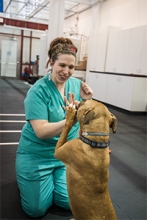
Your scheduled visit to the Sports Medicine and Rehabilitation Service at the Cornell University Hospital for Animals begins with check in at the reception desk. If any diagnostic imaging is necessary, it is a good idea to not feed your dog or cat in the morning before the appointment in the event that sedation is needed for imaging. Following a small amount of paperwork, you will be greeted in the waiting room by our resident or technician and brought to a private examination room.
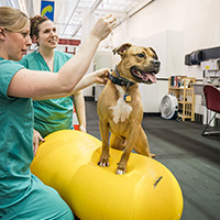
Your pet's history and a physical examination will be performed by either a student or technician, followed by further assessment by a resident or faculty member, and a full orthopedic and soft tissue examination. We may recommend further testing, and will discuss with you potential diagnosis, next steps, cost and logistics.
Often, you will be asked to leave your pet in our care for the day so that we can begin appropriate testing, which can include blood tests or diagnostic imaging. Given our busy schedule and consultations with other specialists regarding your pet's care, you may be asked to return to discuss our findings later in the day.
Depending on the outcome of the appointment we will discuss many therapeutic options and will help you choose the best course of treatment for you and your companion.
Other resources and services
American College of Veterinary Sports Medicine and Rehabilitation
The American College of Veterinary Sports Medicine and Rehabilitation advances the art and science of veterinary medicine by promoting expertise in the structural, physiological, medical and surgical needs of athletic animals and the restoration of normal form and function after injury or illness.
Cornell University Hospital for Animals Companion Animal Nutrition Service
The Cornell University Hospital for Animals is among a small number of animal hospitals across the nation that offers comprehensive nutrition services provided by boarded specialists in the area of veterinary nutrition for hospital and clinic patients, as well as nutrition consultations for animal owners across the country.
The Richard P. Riney Canine Health Center
The Cornell Richard P. Riney Canine Health Center is dedicated to improving the lives of dogs, helping them lead longer, healthier and happier lives. We do this through research, outreach and engagement. Cornell has a long history of game-changing contributions in canine health. From vaccine development, to genomic research addressing diseases such as blindness, to exploring the continuum of basic foundational research through to clinical application, all under one roof.



